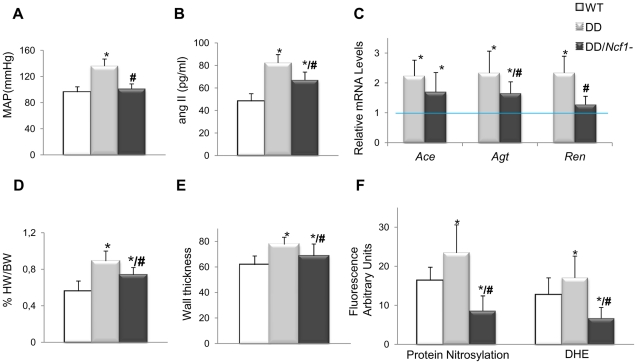Figure 2. Cardiovascular features, angII/Ren system, and oxidative stress parameters in wild-type, DD, and DD/Ncf1− mice.
(A) Mean arterial blood pressure in conscious 16-week-old mice. DD mice showed significantly elevated mean blood pressure when compared to wild-type littermates (P<0.001). Values were reduced in DD/Ncf1− animals with respect to DD, and were not significantly different from wild-type littermates. (B) AngII plasma levels were also significantly elevated in DD mice when compared to wild-type littermates (P<0.001) and partially reduced in DD/Ncf1− animals (P = 0.002/P = 0.036, versus wild-type and DD mice respectively). (C) Relative Ace, Agt and Ren transcript levels in heart mRNA from each genotype. Data were normalized such that the mean of the wild-type group was 1.0 represented by the blue line. (D) Relative heart weight with respect to body weight in post-mortem 16-week-old mice. DD mice displayed significantly enlarged hearts with respect to wild-type mice (P<0.001). Relative heart weight was ∼20% less in DD/Ncf1− compared to DD (P = 0.039). (E) Average arterial wall size in the ascending aorta of the different groups of animals. Arterial wall thickness was significantly smaller in DD/Ncf1− when compared to DD mice. (F) Quantification of oxidative stress parameters expressed as arbitrary unit of fluorescence. Significantly higher protein nitrosylation levels (P<0.001) and global ROS production (P<0.001) were found in DD mice compared with wild-type and DD/Ncf1− littermates. *P<0.05 versus wild-type; # P<0.05 versus DD mice. The results represent the mean ± SD (n = 7–12 per group or n = 3–4 per oxidative stress analysis).

